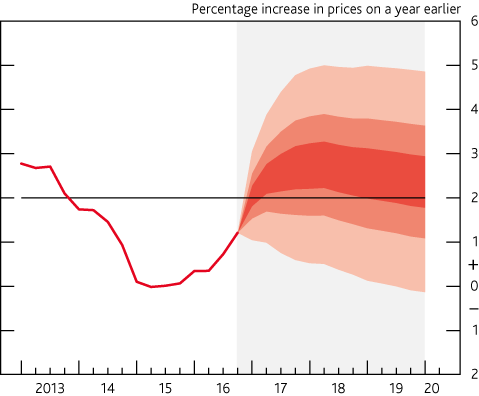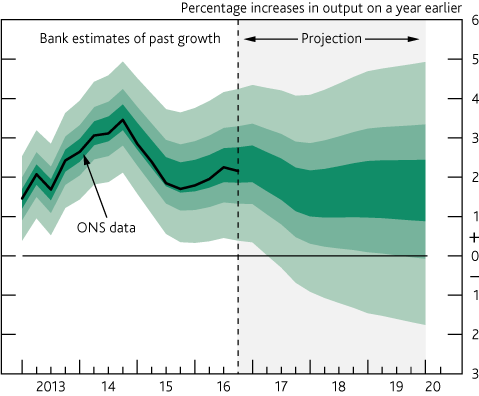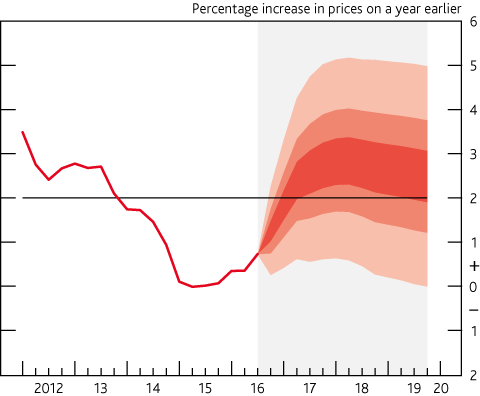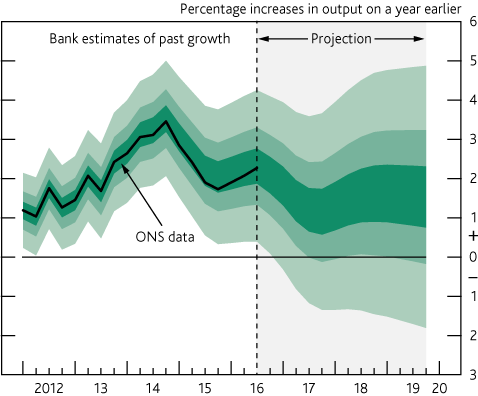Financial markets and global economic developments
Since the November Report, there have been rises in government bond yields and equity prices globally. Market contacts attribute these moves primarily to greater near-term momentum in global activity growth and an anticipated expansion of US fiscal policy further ahead. Sterling has been volatile, probably reflecting changing expectations of the form and impact of Brexit.
Read more on financial markets and global economic developments
Demand and output
Output growth has been stable during 2016 at close to past average rates. Underpinning that, consumption growth has been robust, though it is expected to slow as the rise in import prices weighs on households’ purchasing power. Activity in the housing market has picked up slightly but remains subdued. In contrast, investment has declined over the past year and, despite the depreciation in sterling, net trade has dragged on GDP growth.
Read more on demand and output
Supply and the labour market
Employment growth has slowed although the unemployment rate has fallen a little further. Unemployment is projected to remain somewhat above its equilibrium rate, the estimate of which has been revised down since November as part of the MPC’s regular assessment of aggregate supply-side conditions. Productivity growth is projected to be modest. Weak productivity and a degree of slack in the labour market are projected to continue to weigh on wage growth, as the drag from low inflation diminishes.
Read more on supply and the labour market
Costs and prices
CPI inflation picked up to 1.6% in December. It is projected to rise above the 2% target for a time as the past fall in the sterling exchange rate passes through to consumer prices. The extent to which inflation rises above the target will be sensitive to any further movements in sterling, which has been volatile. It will also depend on domestic cost pressures. Slowing domestic demand growth is likely to weigh slightly on labour cost pressures and domestically generated inflation. Inflation expectations have risen but are judged to be broadly consistent with the MPC’s 2% target.
Prospects for inflation
UK economic activity remained resilient in the second half of 2016. Growth is likely to slow over 2017 as households adjust their spending to lower real income growth resulting in large part from the 18% fall in sterling since late 2015. That fall in sterling will raise CPI inflation, which is likely to return to around the 2% target by February and then rise above it over the following months. Conditioned on a market path for Bank Rate that rises to just under 0.75% by early 2020, the MPC projects CPI inflation to fall back gradually from the middle of 2018. Continued pass-through of higher import prices means, however, that inflation is projected to remain somewhat above the 2% target at the end of the Committee’s three-year forecast period.




